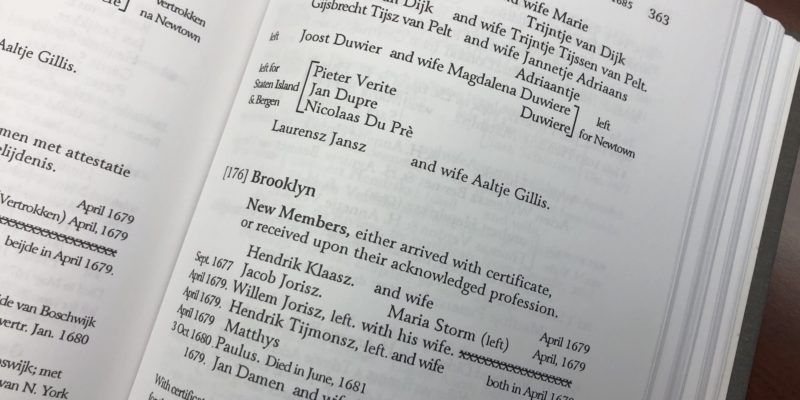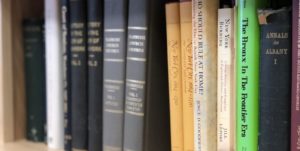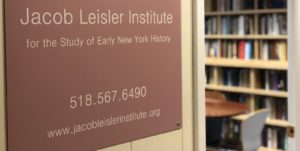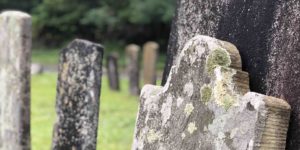David William Voorhees, translator and editor, Records of the Reformed Protestant Dutch Church of Flatbush, Kings County, New York, Volume 1, 1677-1720 (New York: Holland Society of New York, 1998).
This volume consists of English translations of seventeenth- and early eighteenth-century records of Long Island’s Dutch community. Included are consistory minutes, baptismal and marriage records, and membership lists of the Dutch Reformed congregation in the Flatbush neighborhood of present-day Brooklyn. These records are invaluable to historians, genealogists, and those interested in the early history of Brooklyn’s neighborhoods. Special features include transliterated Dutch text and English line-for-line translation. Hard cover with illustrations.

David William Voorhees, translator and editor, Records of the Reformed Protestant Dutch Church of Flatbush, Kings County, New York, Volume 2, Deacons’ Accounts, 1654-1709 (New York: Holland Society of New York, 2009).
This volume consists of English translations of seventeenth- and early eighteenth-century financial records of the Flatbush (or Midwood) Dutch church. Included are church receipts and expenses for building maintenance and pastoral fees, as well as records relating to burial shrouds, marriage fees, poor relief, financial loans, and book purchases. These records offer insight into the social, cultural, and political lives of Flatbush residents. Special features include transliterated Dutch text and English line-for-line translation. Hard cover.
Both volumes of The Flatbush Records are available for purchase by contacting the Jacob Leisler Institute.
The following is a bibliography of relevant publications written or edited by Jacob Leisler Institute Director David William Voorhees. These, The Flatbush Records, and many other works are available in the Library.
A selection of Dr. David William Voorhees’ scholarship
“The ‘Fervent Zeale’ of Jacob Leisler,” William and Mary Quarterly, 3rd ser., LI (July 1994), 3: 447-472.
“‘Fanatiks’ and ‘Fifth Monarchists’: The Milborne Family in the Seventeenth-Century Atlantic World,” New York Genealogical and Biographical Record 129 (April 1998), 2: 67-75 (July 1998), 3: 174-82.
“In the Republic’s Tradition: Persistence of Dutch Culture in the Mid-Atlantic Colonies after the 1664 English Conquest,” de Halve Maen 74 (Fall 2001), 49-54.
“Jacob Leisler and the Huguenot Network in the English Atlantic World,” From Strangers to Citizens, Integration of Immigrant Communities in Great Britain, Ireland and the Colonies, 1550-1750 (Sussex Academic Press, 2001), 322-331.
“Rotterdam-Manhattan Connections: the influence of Rotterdam thinkers upon New York’s 1689 Leislerian movement,” in Paul van de Laar, Jan van Herwaarden, et al, eds., Rotterdams Jaarboekje 10 (Rotterdam, Neth., 2001), 9: 196-216.
“Tying the Loose Ends Together: Putting New Netherland studies on a par with the study of other regions,” Joyce D. Goodfriend, ed., Revisiting New Netherland: Perspectives on Early Dutch America (Brill, Neth., 2005), 309-328.
“The Pre-Revolutionary Landings of Columbia County,” Columbia County History & Heritage 4 (Spring 2005), 1: 8-10.
Co-editor with Dennis Maika of special New Netherland issue of New York History (Fall 2008).
“Family and Faction: The Dutch Roots of Colonial New York’s Factional Politics,” in Martha Dickinson Shattuck, Explorers, Fortunes & Love Letters: A Window on New Netherland (Albany, NY: Mt. Ida Press, 2009), 129-147.
“The Dutch Legacy in America,” in Roger Panetta, ed., Dutch New York: The Roots of Hudson Valley Culture (Bronx, NY: Fordham University Press, 2009), 411-429.
“All Authority turned upside downe”: the ideological origins of Leislerian political thought,” in Hermann Wellenreuther, ed., The Atlantic World in the later Seventeenth Century. Essays on Jacob Leisler, Trade, and Networks (Goettingen University, 2009), 89-118.
“English Law Through Dutch Eyes: The Leislerian Understanding of the English Legal System in New York,” in Albert M. Rosenblatt and Julia C. Rosenblatt, eds., Opening Statements: Law, Jurisprudence, and the Legacy of Dutch New York (Albany: State University of New York Press, 2013), 207-227.



